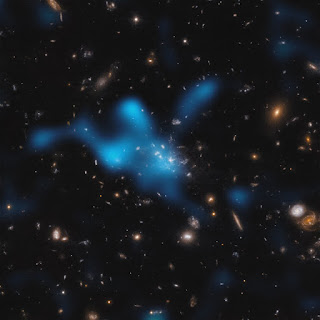Galaxy clusters host numerous galaxies and contain a vast "intracluster medium" (ICM) of gas that exceeds the mass of the galaxies themselves[1]. While much of the physics of galaxy clusters is understood, observations of the initial ICM formation phases are limited[1]. Galaxy clusters are massive enough to gather gas that heats up as it falls towards the cluster[3].
Researchers detected the ICM of the Spiderweb protocluster through the thermal Sunyaev-Zeldovich (SZ) effect[2]. By measuring the SZ effect's shadows on the cosmic microwave background, astronomers can infer the existence of hot gas, estimate its mass, and map its shape[1]. The study found that the Spiderweb protocluster contains a vast reservoir of hot gas at a temperature of several tens of millions of degrees Celsius[1]. This discovery indicates that the Spiderweb protocluster is expected to transform into a massive galaxy cluster in around 10 billion years, increasing its mass by at least a factor of ten[1].
These findings lay the groundwork for synergies between ALMA and ESO's upcoming Extremely Large Telescope (ELT), which will revolutionize the study of structures like the Spiderweb[1].


Post a Comment